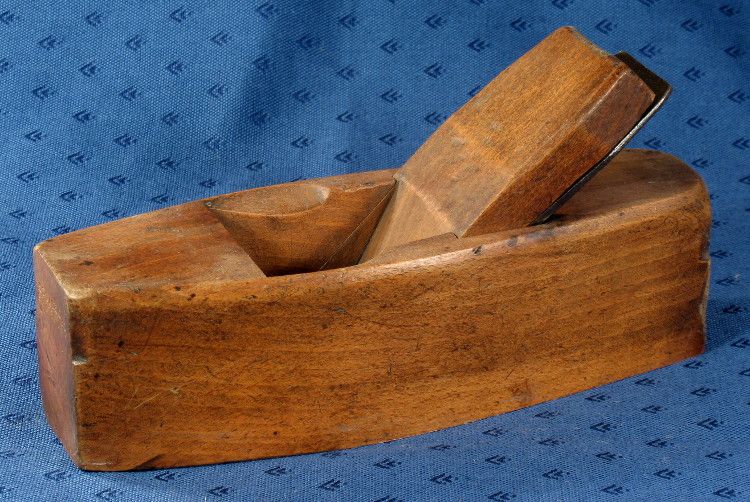bugbear
Established Member
I have, in my accumulation of car boot bargains to cheap to resist, a low angle coffin bodied plane, by Griffiths of Norwich.
The key statistic is the bedding angle - a rather low 36.5 degrees.
The other measurements are:
* overall length 8 1/2"
* toe to mouth 2 1/2"
* blade width 2"
* body depth 2 3/8"
Since the shaving aperture is currently 4mm, I was concerned that the apparently quite shallow body had been caused by sole-jointing, but a quick scale diagram showed that 2mm more body depth would close the aperture entirely (low bedding angle leads to a rapid mouth-opening effect with sole wear).
The bed is NOT excavated for the bolt for holding a cap-iron, so the plane is clearly intended for a single-iron. Despite this, the present (I Sorby, usual for Griffiths) iron is "cut". It would seem reasonable to infer that these planes were therefore rather specialist, selling in small numbers - at least, too small to justify producing a special blade.
The only use I can think of for this plane is in conjunction with a mitre-jack; the coffin body precludes the other kinds of shooting board. I'm assuming it's for end grain, given the bedding angle.
BugBear
The key statistic is the bedding angle - a rather low 36.5 degrees.
The other measurements are:
* overall length 8 1/2"
* toe to mouth 2 1/2"
* blade width 2"
* body depth 2 3/8"
Since the shaving aperture is currently 4mm, I was concerned that the apparently quite shallow body had been caused by sole-jointing, but a quick scale diagram showed that 2mm more body depth would close the aperture entirely (low bedding angle leads to a rapid mouth-opening effect with sole wear).
The bed is NOT excavated for the bolt for holding a cap-iron, so the plane is clearly intended for a single-iron. Despite this, the present (I Sorby, usual for Griffiths) iron is "cut". It would seem reasonable to infer that these planes were therefore rather specialist, selling in small numbers - at least, too small to justify producing a special blade.
The only use I can think of for this plane is in conjunction with a mitre-jack; the coffin body precludes the other kinds of shooting board. I'm assuming it's for end grain, given the bedding angle.
BugBear

































